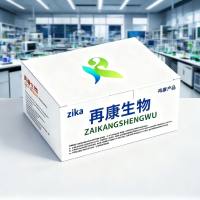CsCl - density separation of DNA
互联网
Dr. William H. Heidcamp, Biology Department, Gustavus Adolphus College http://homepages.gac.edu/~cellab/chpts/chpt14/ex14-6.html
Materials
•DNA
•CsCl
•0.3 N NaOH
•0.2 M Tris-HCl buffer, pH 7.0
•Ultracentrifuge and rotor
•UV spectrophotometer and cuvettes
Procedure
1.Determine the G C content of the sample DNA (Exercise 14.5)
2.Once the G C content is determined, the bouyant density of the DNA can be determined from the formula:
p = 1.660 g/cm 3 0.098 x (G C fraction)
Using the bouyant density and the CsCl Table in Appendix F, determine the concentration of CsCl salts to use for dissolution of the DNA.
3.Dissolve approximately 100 micrograms of DNA in 4.2 ml of the appropriate CsCl solution in 0.3 N NaOH.
4.Load the dissolved DNA/CsCl solution onto a centrifuge tube suitable for a 4.2 ml sample and speeds of 30-40,000 RPM (Beckman SW39 rotor, or equivalent).
5.For the Beckman SW39 rotor, centrifuge the material at 35,000 RPM for 65 hours at 22℃.
6.Collect the fractions in 0.1 ml steps.
7.Add 0.2 M Tris-HCl, pH 7.0 to each fraction and measure the A260 for each fraction. If available, a continuous flow system using a fraction collecting device may be used.







